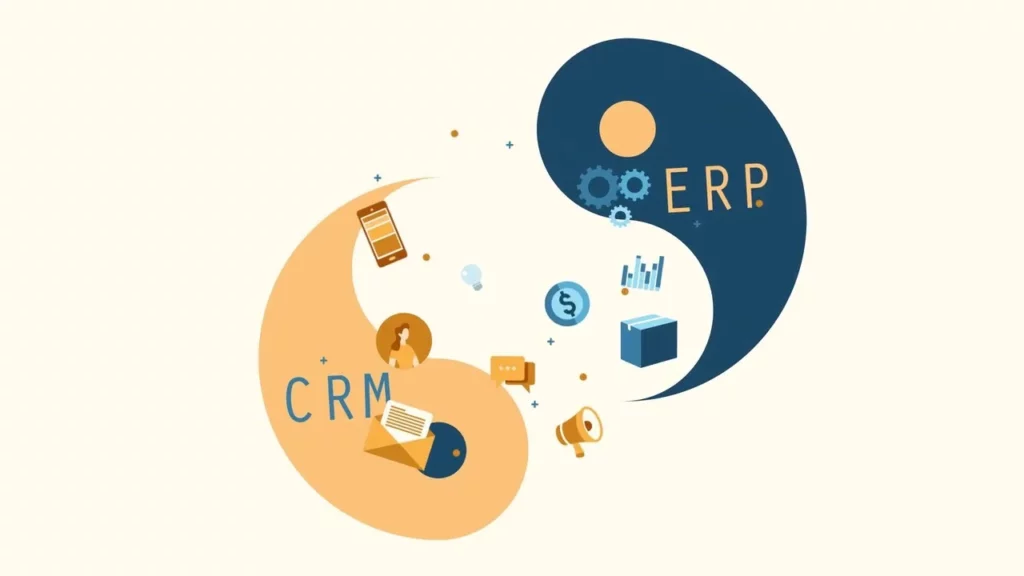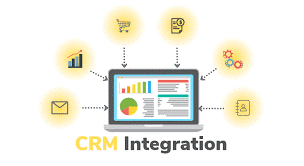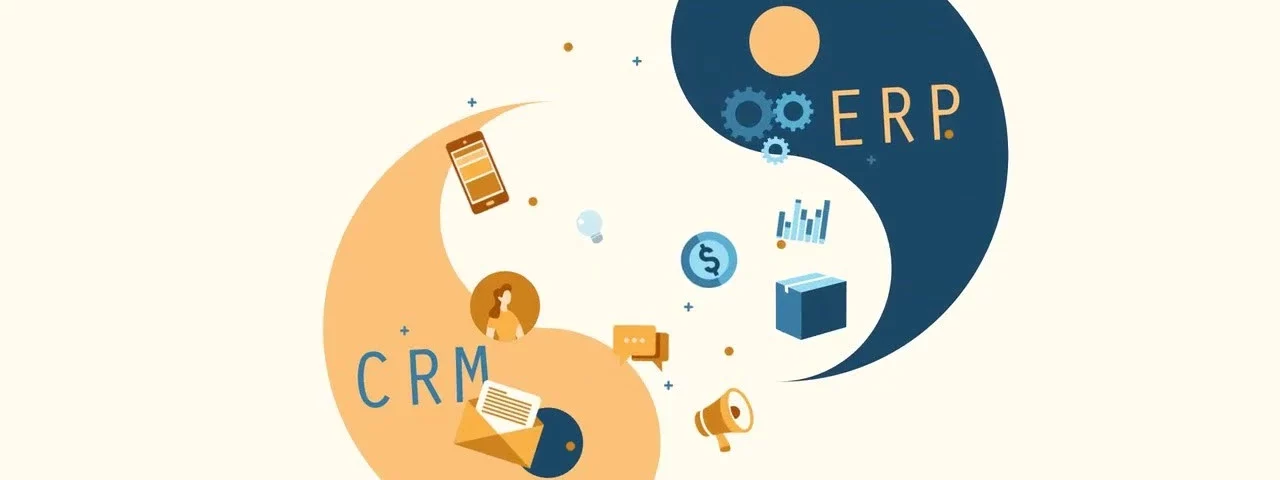
In today’s era, companies strive to optimize their critical business processes for improved efficiency and visibility. Among these processes, certain fundamental workflow management services are the backbone of enterprise operations. Therefore, having visibility and control over these workflows has become increasingly crucial.
To achieve this level of control and visibility, companies are investing in technologies like enterprise resource planning (ERP) software and customer relationship management (CRM) software. The seamless integration of ERP and CRM systems has become a top priority for IT professionals, line-of-business managers, and executives.
When ERP and CRM systems are integrated, they create a cohesive unit that enhances overall business operations. The integration enables a unified view of data, streamlines processes, eliminates data silos, and facilitates more informed decision-making across the organization. By combining the power of ERP and CRM integration, companies can unlock greater efficiency, improve customer relationship management, and ultimately achieve their digital transformation goals.
Can your CRM be integrated with your ERP?
Yes, it is possible to integrate CRM systems with ERP (enterprise resource planning) systems. Integrating CRM and ERP is a common practice among businesses seeking to optimize their operations and improve customer management.
The CRM and ERP integration allows seamless data flow and synchronization between the two platforms. It provides a comprehensive view of customer information, sales data, order history, inventory, and financials, all in one centralized system.
Difference between CRM and ERP integration
ERP and CRM integration refers to the process of connecting and synchronizing enterprise resource planning (ERP) and customer relationship management (CRM) systems to enable seamless data flow and collaboration between the two platforms. It involves sharing and updating information between the ERP and CRM systems in real-time or at regular intervals, ensuring data consistency and accuracy across both systems.
ERP systems focus on managing and integrating various business processes, such as finance, human resources, manufacturing, supply chain management, and inventory management. They provide a centralized database that stores critical business data, including financial transactions, product information, inventory levels, and production schedules.
On the other hand, CRM systems are designed to manage customer-related activities, including lead generation, sales, marketing, and customer service. They store customer contact information, communication history, purchase records, and other relevant data to enable effective customer engagement and relationship management.

Benefits of integrating CRM with ERP
Enhanced Data Accuracy: By integrating CRM and ERP systems, data consistency and accuracy are improved. Customer information, such as contact details, order history, and preferences, can be automatically synchronized between the two systems, ensuring that all departments have the most up-to-date and reliable data.
Streamlined Processes: Integration eliminates the need for manual data entry and reduces duplication of efforts. Sales representatives can access real-time inventory information, pricing details, and product availability from the ERP system directly within the CRM system. This streamlines the sales process, improves order management, and enables more efficient customer interactions.
Improved Customer Insights: CRM and ERP systems provide a holistic view of customer interactions, allowing businesses to gain deeper insights into customer behaviors, preferences, and buying patterns. This data can be used to personalize marketing campaigns, improve customer service, and identify cross-selling or upselling opportunities.
Efficient Sales and Order Management: Integration enables seamless coordination between CRM and ERP systems, automating the flow of information from lead generation to order fulfillment. Sales representatives can create quotes, generate sales orders, and track order status within the CRM system, while the ERP system manages inventory, shipping, and invoicing. This leads to smoother order processing, reduced errors, and improved customer satisfaction.
Financial Visibility: Integrating CRM and ERP systems allows for better financial visibility and reporting. Sales data, invoices, and revenue information can be consolidated, providing accurate insights into the business. This integration helps streamline financial processes such as revenue recognition, forecasting, and financial analysis.
It is important to note that CRM and ERP integration can vary depending on the specific systems being used and the requirements. Custom integration or the use of third-party integration tools may be necessary to ensure seamless and efficient integration between the two systems.
How to Create a Successful ERP and CRM Integration Strategy
Creating a successful ERP and CRM integration strategy requires careful planning and consideration of various factors. Here are some steps to help you develop an effective integration strategy:
Define your objectives: Start by clearly defining your integration objectives. Identify the specific business processes and data that need to be synchronized between ERP and CRM systems. Determine the desired outcomes, such as improved data accuracy, streamlined processes, and enhanced customer insights.
Assess System Compatibility: Evaluate the compatibility between your ERP and CRM systems. Consider factors such as system versions, underlying technologies, and APIs (application programming interfaces) available for integration. Determine if additional middleware or integration tools are required to facilitate the integration.
Map Data and Workflows: Analyze the data structures and workflows of both systems to identify areas of overlap and alignment. Map the data fields, ensuring that the necessary data is seamlessly shared between the systems. Define data transformation rules to ensure consistency and accuracy during integration.
Identify Integration Points: Determine the key integration points where data should be synchronized between ERP and CRM systems. These integration points could include customer data, sales orders, inventory, pricing, and financial information. Prioritize the integration points based on their impact on business operations and the customer experience.
Select Integration Approach: Decide on the integration approach that suits your needs. It must involve using pre-built connectors provided by the ERP and CRM vendors, utilizing middleware or integration platforms, or custom development using APIs. Consider cost, time, complexity, scalability, and future flexibility.
Plan Data Migration and Testing: Develop a data migration plan to ensure a smooth transition of data from existing systems to the integrated environment. Define data validation and reconciliation processes to ensure data accuracy. Conduct comprehensive testing to identify and resolve any issues before going live with the integrated solution.
User Training and Change Management: Prepare your users for the integrated system by providing adequate training and support. Communicate the benefits of the integration and how it will impact their workflows and processes. Address any concerns or resistance to change, and encourage user adoption through ongoing support and feedback channels.
Monitor and fine-tune: Once the integration is live, monitor the system closely to ensure data synchronization, performance, and user satisfaction. Continuously assess the integration’s effectiveness and adjust as needed to optimize processes and address any evolving business requirements.
Security and Data Governance: Implement robust security measures and access controls to protect sensitive data during integration. Define data governance policies to ensure data integrity, privacy, and compliance with regulatory requirements.
Continuous Improvement: ERP and CRM integration is an ongoing process. Continuously evaluate the integration’s performance, gather feedback, and identify opportunities for improvement. Stay updated with new features, updates, and enhancements from the ERP and CRM vendors to leverage new capabilities and functionalities.
By following these steps, you can create a comprehensive ERP and CRM integration strategy that aligns with your business objectives, enhances operational efficiency, and maximizes the benefits of integrating your systems.
Summary
By embracing Werq Labs CRM and ERP system integration, organizations can unlock the full potential of their data, streamline processes, improve customer satisfaction, and drive growth. This integration enables businesses to gain a unified view of their operations and customers, enhanced efficiency, collaboration, and informed decision-making.
Ultimately, CRM and ERP system integration are a critical step towards achieving a comprehensive digital transformation and staying ahead in today’s competitive business landscape.
Werq Labs, IT company India offer workflow management services including CRM and ERP services as well as ServiceNow.
Contact us to know more.
